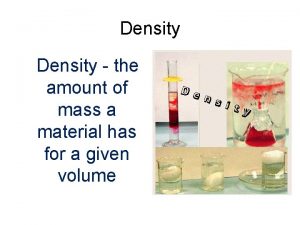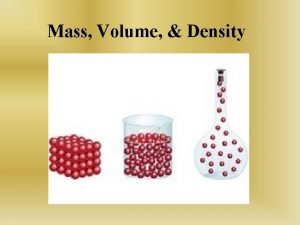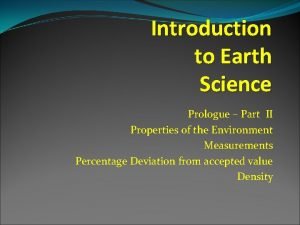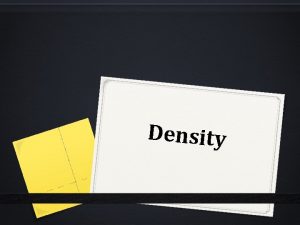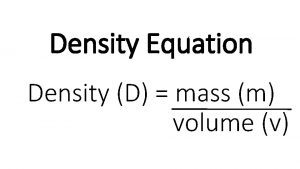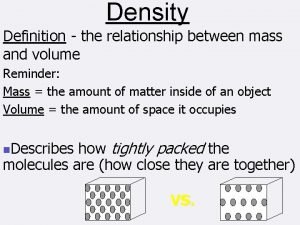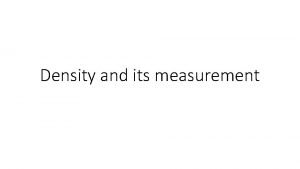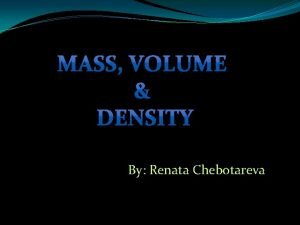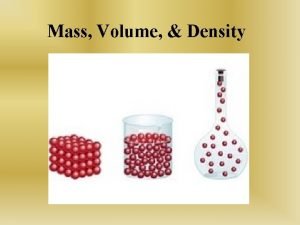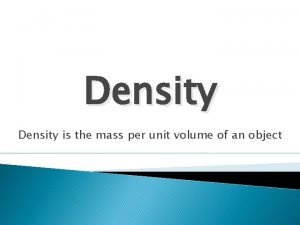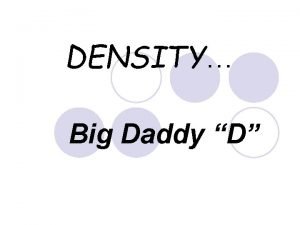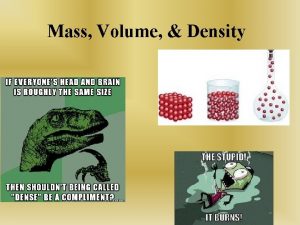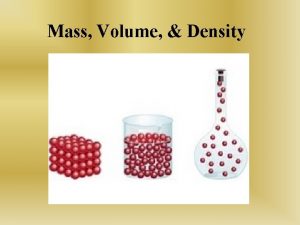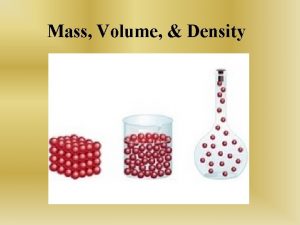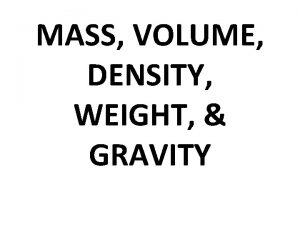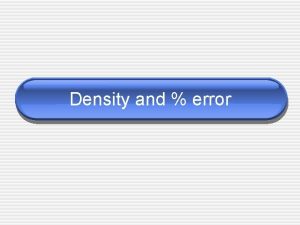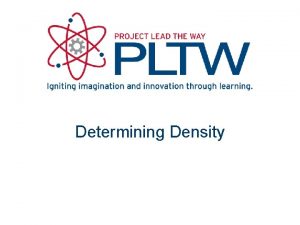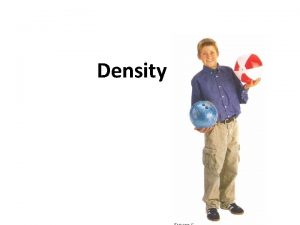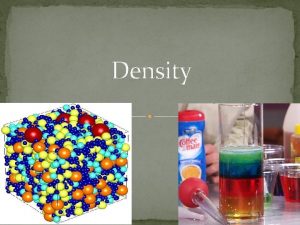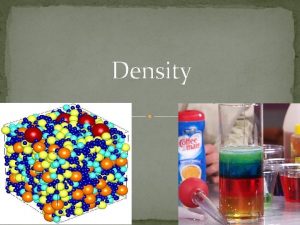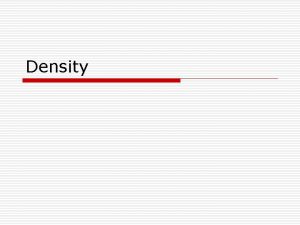Mass Volume Density Mass Measurement of the amount
















- Slides: 16

Mass, Volume, & Density

Mass Measurement of the amount of matter (or stuff) in an object – Measured in grams (g) There are 3 states of matter: Solid Liquid Gas

Volume Measurement of the amount of space an object takes up – Measured in milliliters (ml) or cm 3

Which do you think would have the greater volume? The greater mass? Why? 1 kg of feathers 1 kg of rocks

Density is defined as mass per unit volume. It is a measure of how tightly packed and how heavy the molecules are in an object. Density is the amount of matter within a certain volume.

Which one is more dense?

Which one is more dense? Now which one is more dense?

To find the density 1 - Find the mass of the object 2 - Find the volume of the object 3 - Divide Density = Mass g Volume c³ ALWAYS REMEMBER UNITS!

To find density: 1) Find the mass of the object 2) Find the volume of the object 3) Divide : Density = Mass - Volume Ex. If the mass of an object is 35 grams and it takes up 7 cm 3 of space, calculate the density.

To find density: 1) Find the mass of the object 2) Find the volume of the object 3) Divide : Density = Mass - Volume Ex. If the mass of an object is 35 grams and it takes up 7 cm 3 of space, calculate the density Set up your density problems like this: Given: Mass = 35 grams cm 3) Volume = 7 cm 3 Unknown: Density (g/ Solution: D = 35 g/7 cm 3 Formula: D = M / V D = 5 g/cm 3

Let’s try some density problems together Work on these problems with your neighbor 1 Frank has a paper clip. It has a mass of 9 g and a volume of 3 cm 3. What is its density? 2. Frank also has an eraser. It has a mass of 3 g, and a volume of 1 cm 3. What is its density? 3. Jack has a rock. The rock has a mass of 6 g and a volume of 3 cm 3. What is the density of the rock? 4. Jill has a gel pen. The gel pen has a mass of 8 g and a volume of 2 cm 3. What is the density of the rock?

Ways to Affect Density Change Mass AND Keep Volume Same Increase the mass increase density Decrease the mass decrease in density Which container has more density? A B

Ways to Affect Density Change Volume AND Keep Mass Same Increase the volume decrease density Decrease the volume increase density Which container has more density? A B

In your notebook illustrate the answer to the following question: What 2 ways will INCREASE density?

What 2 ways will INCREASE density? Keep the same mass AND decrease the volume Keep the same volume AND increase the mass

Super Scientist Question of the Day • Jake has a cube, a ruler, and a balance. • How can Jake find the density of the book with the tools he has?
 Dmv triangle chemistry
Dmv triangle chemistry What is density
What is density Calculate volume of water
Calculate volume of water Questions on density mass and volume
Questions on density mass and volume How to find the volume using density and mass
How to find the volume using density and mass Mass equals density times volume
Mass equals density times volume A lead cylinder has a mass of 540 grams
A lead cylinder has a mass of 540 grams How do you find density using mass and volume
How do you find density using mass and volume Which has the greater mass
Which has the greater mass What is the relationship between mass volume and density
What is the relationship between mass volume and density Dmv triangle
Dmv triangle Mass, volume and density are all properties of
Mass, volume and density are all properties of Mass and volume to density
Mass and volume to density Mass volume density video
Mass volume density video Density mass per unit volume
Density mass per unit volume Big daddy d
Big daddy d Density triangle units
Density triangle units
